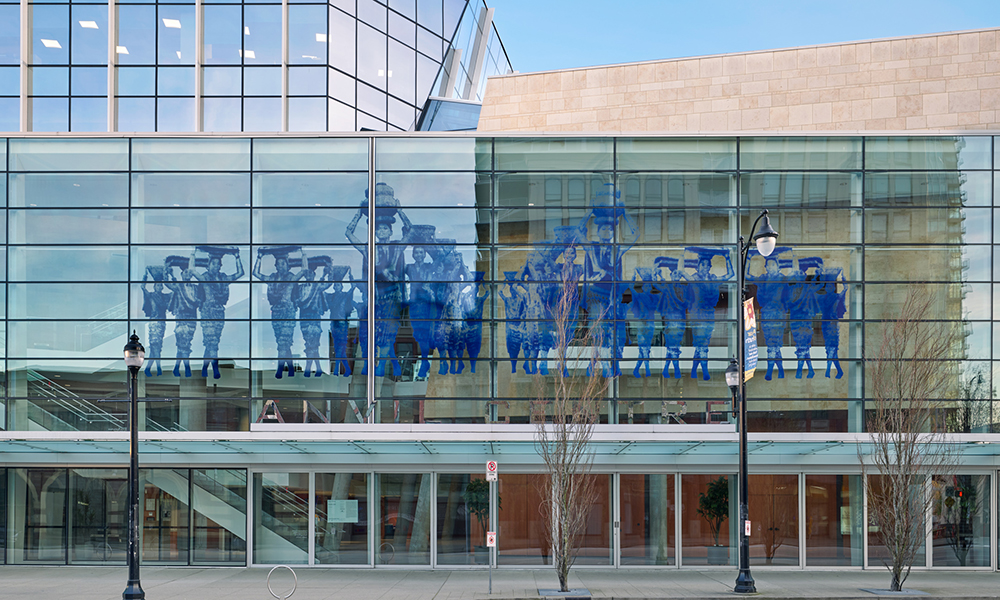
UBCO's latest artist in residence Karen Zalamea will host a community workshop to create a cyanotype. An example of Zalamea's cyanotypes includes Ensemble which was installed at the City of New Westminster's Anvil Centre this spring. Photo credit: Dennis Ha.
What: Collaborative cyanotype workshop
Who: Visual artist Karen Zalamea
When: Thursday, August 8 from 1 to 2:30 pm
Where: Woodhaven Eco Culture Centre, 939 Raymer Ave., Kelowna
UBC Okanagan's latest Artist in Residence, will help create a community collaboration in an open workshop as part of her residency.
Karen Zalamea is the third artist invited to the Woodhaven Eco Culture Centre for the summer residency, and the first to be able to use the purpose-built art studio on the property. She will spend three weeks at the centre where she will work on her art practice, engage with the community and offer the in-person workshop.
The Woodhaven Artist in Residence Program is run by UBCO's Faculty of Creative and Critical Studies (FCCS), and each year provides a paid residency opportunity for a diverse variety of visiting artists, including writers and visual, digital media or performance artists.
The new 360 sq. foot studio is nestled in the trees on the property and offers a unique opportunity for artists to work creatively in the space, explains Jodey Castricano, FCCS Associate Dean of Research and Graduate Studies.
"We are thrilled to be able to offer this visiting artist residence opportunity in Woodhaven where they have dedicated time to focus on their art practice," says Castricano. "We are also excited to have Zalamea as the first artist to use the studio and for the community to be involved with the workshop."
Zalamea (she/her) is a Filipino-Canadian artist, educator and cultural worker whose photographic practice attends to issues of identity, culture and memory. Her recent projects have incorporated cyanotypes, a camera-less technique developed in the mid-19th century. A cyanotype is made when paper, coated with an iron salt solution, is exposed to ultraviolet light, then developed and fixed with water. The result is an image of Prussian blue and white tones.
"During my residency, I plan to continue my investigations with cyanotypes to engage histories linked to plant life and water," she explains. "I am thrilled to carry out this studio work in a nature conservancy supported by FCCS, which continues to advance interdisciplinary research and exchange in the environmental humanities."
Zalamea's residency will include a free collaborative cyanotype workshop for the community on Thursday, August 8 from 1 to 2:30 pm at the Woodhaven Eco Culture Centre. Participants will work together on a large-scale cyanotype created with natural and human-made matter from the surrounding area. The items will be placed directly on a photographic surface that will be prepared to create the print.
Zalamea explains that with the photograph's exposure to available sunlight followed by its development with water, the cyanotype will be a site-specific visual document of the area's ecosystem and the collective efforts of participants.
"As a collaborative process, we will discuss how our image-making is evidenced on the photographic surface, and how the cyanotype may not only record place, but also time, memory and community," she says.






